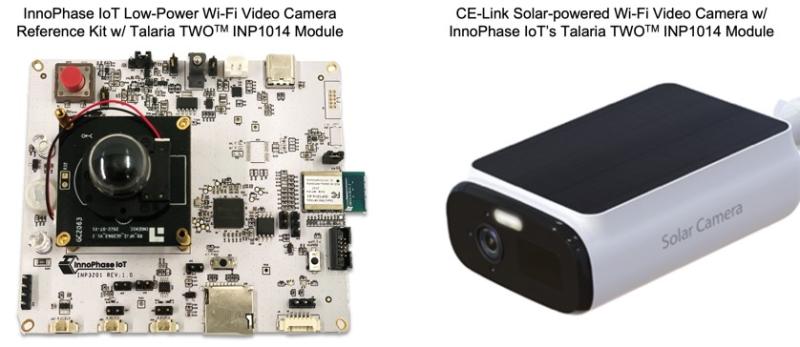Low-power components for IoT played a major role at Sensors Converge 2023 in June, continuing a global trend that has accelerated over the past year with broad industry focus on sustainability and ease of implementation.
In one example, InnoPhase IoT of San Jose showed sensor-to-cloud customer applications based on its Talaria TWO family of Wi-Fi and BLE SoCs and modules announced in May. The company claimed its solutions could offer IoT products about 10 years of battery life.
Ironically, Sensors Converge also featured presenters working to make IoT sensing battery free using ultra-low power RF communications. RF, solar and even vibration can all be energy harvesting sources for battery-free operation. “Critical to this objective is enabling low-power RF communications technology for IoT connectivity,” wrote Patricial Bower, a product manager at HaiLa Technology and a Sensor Converge presenter.
RELATED: A path to battery-free IoT sensing
In a series of announcements prior to Sensors, Innophase IoT described its sensors applications across a broad array of markets—from smart home to factory automation and industrial IoT.
Innophase quoted Matrix Product Development as a developer of a remote temperature monitoring IoT application using Talaria TWO. In that example, Matrix had an end customer seeking seven or more years of battery life.
Sunsa Homes, maker of the Sunsa Wand automated window blind, incorporated Innophase IoT’s Wi-Fi sensor to allow customers to control window blinds from anywhere using iPhone or Android apps. The product also uses light and temperature sensors to trigger opening and closing of blinds. For Sunsa Homes, it was necessary to connect directly to Wi-Fi without using a hub. Innophase IoT offered a Sunsa Wand demo at its Sensors Converge booth.
Also, Embux Technology is relying on Talaria TWO’s Wi-Fi module to provide long battery life and cloud connected sensors in its industrial APs and gateways.
Innophase IoT also in May promoted its Talaria TWO for battery-operated video cameras, smart video doorbells, wearables and more. Typical video cameras burn through batteries in three to six months, but Innophase IoT touts it can lower power consumption by 40% for more than one year of battery life.
Hualai Technology, a maker of smart video cameras, combined an Omnivision video camera platform with a Talaria TWO Wi-Fi/BLE module to provide ultra-low power and direct-to-cloud connectivity for battery operated cameras.
Innophase IoT has also helped innovate with AI for videocamera systems. CE-Link, a wireless video camera OEM, has build an Ai-enabled smart video camera up to 3x the battery life. A camera augmented with a solar panel allows for even more battery life.

In an interview with Fierce, Innophase IoT senior director of business development Deepal Mehta described the need for greater battery efficiency in IoT. “We believe only 10% of IoT devices are battery operated and we see that going to 50% by 2027,” he said.
Mehta said last year’s creation of the Matter interoperability standard has created “a lot of interest from customers, including camera manufacturers.” Matter hasn’t had a big impact yet, and is likely to take two years to catch on, he added.
Customers are increasingly interested in AI’s impact in the IoT space, and Innophase IoT is working with partners in that arena as well, he said. “We are riding the IoT wave,” Mehta said.
